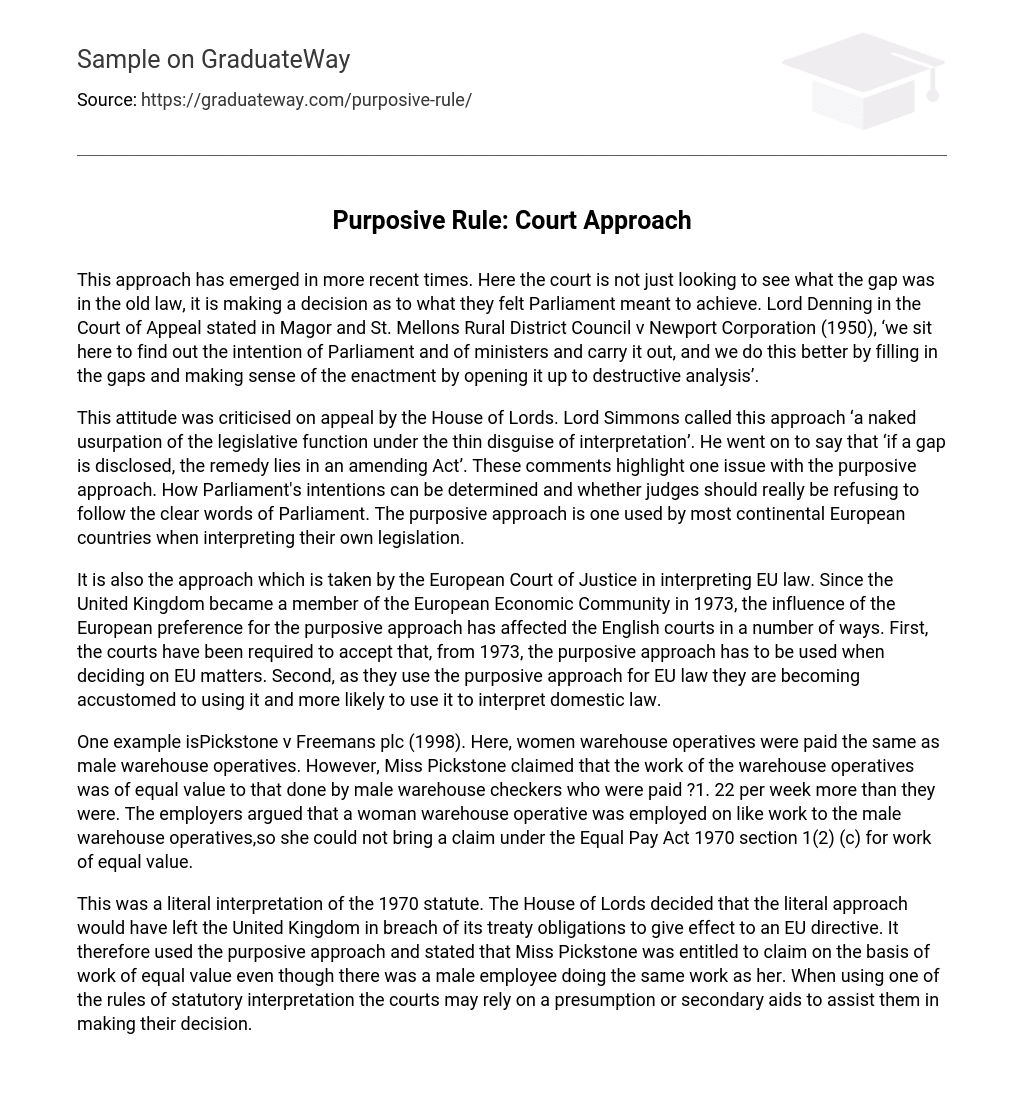This approach has emerged in more recent times. Here the court is not just looking to see what the gap was in the old law, it is making a decision as to what they felt Parliament meant to achieve. Lord Denning in the Court of Appeal stated in Magor and St. Mellons Rural District Council v Newport Corporation (1950), ‘we sit here to find out the intention of Parliament and of ministers and carry it out, and we do this better by filling in the gaps and making sense of the enactment by opening it up to destructive analysis’.
This attitude was criticised on appeal by the House of Lords. Lord Simmons called this approach ‘a naked usurpation of the legislative function under the thin disguise of interpretation’. He went on to say that ‘if a gap is disclosed, the remedy lies in an amending Act’. These comments highlight one issue with the purposive approach. How Parliament’s intentions can be determined and whether judges should really be refusing to follow the clear words of Parliament. The purposive approach is one used by most continental European countries when interpreting their own legislation.
It is also the approach which is taken by the European Court of Justice in interpreting EU law. Since the United Kingdom became a member of the European Economic Community in 1973, the influence of the European preference for the purposive approach has affected the English courts in a number of ways. First, the courts have been required to accept that, from 1973, the purposive approach has to be used when deciding on EU matters. Second, as they use the purposive approach for EU law they are becoming accustomed to using it and more likely to use it to interpret domestic law.
One example isPickstone v Freemans plc (1998). Here, women warehouse operatives were paid the same as male warehouse operatives. However, Miss Pickstone claimed that the work of the warehouse operatives was of equal value to that done by male warehouse checkers who were paid ?1. 22 per week more than they were. The employers argued that a woman warehouse operative was employed on like work to the male warehouse operatives,so she could not bring a claim under the Equal Pay Act 1970 section 1(2) (c) for work of equal value.
This was a literal interpretation of the 1970 statute. The House of Lords decided that the literal approach would have left the United Kingdom in breach of its treaty obligations to give effect to an EU directive. It therefore used the purposive approach and stated that Miss Pickstone was entitled to claim on the basis of work of equal value even though there was a male employee doing the same work as her. When using one of the rules of statutory interpretation the courts may rely on a presumption or secondary aids to assist them in making their decision.





